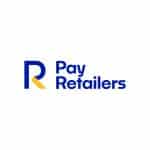Know-Your-Customer (KYC) and Anti-Money Laundering (AML) are regulation standards that verify customer identities and prevent money deposits related to criminal enterprises. KYC AML forces companies to use authentication and verification rules to prevent abuse of the financial system by criminals.
KYC AML helps governments prevent money laundering, terrorist funding, and other forms of corruption.
What Is KYC?
Know-Your-Customer is a set of compliance guidelines that ensures any regulated entity verifies each customer. By obtaining authentication information, a service can validate that someone is who they say they are. It functions as a way to assess risk and deter the misuse of any financial-related services.
The scope of the KYC process varies according to the country and jurisdiction. In most cases, some form of credential or official ID is required, and it must include personal identifying information such as:
- Full Name
- Physical Address
- Date of Birth
Once a business verifies the identity of a customer, the user becomes a trusted individual whom the company can conduct safe and legal business transactions with.
What Is AML?
Anti-Money Laundering is a program that ensures any regulated entity follows preset procedures designed to prevent illicit financial crimes. The guidelines help deter criminals from abusing an organization for money laundering and other corrupt practices.
Under AML, money businesses must authenticate all customers, keep detailed transaction records, and report suspicious money activities to AML authorities. Requirements vary according to jurisdiction, but the large number of stringent obligations helps uncover financial crime and remove organizational liability.
What Is the Difference Between AML and KYC?
AML is a blanket term that covers several different regulations. Since customer verification is an integral part of preventing financial crimes, KYC is a prominent component within the comprehensive AML program. Beyond KYC, AML includes additional requirements such as risk assessments, financial translation monitoring, record keeping, and criminal activity reporting.
KYC is just one mechanism inside the larger framework of AML.
KYC Compliance Requirements
Know-Your-Customer contains three core procedures.
- The Customer Information Phase: First, a business must collect and obtain all necessary personal information from the customer. It is a standard onboarding process for any financial service.
- Customer Due Diligence: Second, a business must verify the obtained information. Various screen methods against official records and trusted sources confirm that the customer or organization is who they say they are. A risk assessment often occurs alongside additional data sourcing to confirm or deny a person’s identity.
- Enhanced Due Diligence: In certain circumstances, the customer will be deemed high risk (listed on sanction and Interpol lists, is a politically exposed person, from a black-listed country, etc). Additional data and cross-identification is required in such circumstances.
Through the KYC process, the financial business should achieve four primary goals:
- Identify the customer
- Screen the customer
- Assess potential risk
- Monitor any further transactions
AML Compliance Requirements
AML compliance updates over time to best reflect the changing fraud environment. The Financial Industry Regulatory Authority (FINRA) oversees all compliance in the United States, while the European Commission sets directives for the European Union.
While the techniques and obligations may change, all AML compliance follows several primary procedures:
- Employing KYC and customer identification
- Crafting complete risk assessments
- Creating policies on internal controls on finances
- Monitoring transactions and suspicious users
- Reporting on suspicious activity
- Appointing an AML compliance officer
- Engaging in AML training for all staff and employees
AML involves numerous guidelines, but the primary goal is to prevent bad actors from gaining access to financial services. By extension, AML deters terrorist funding and other corrupt financial practices. Having each financial service create a responsible organizational culture that can assess and report financial crimes helps protect the entire industry.
Who Must Achieve KYC and AML Compliance?
AML and KYC regulations exist across the globe. The Financial Action Task Force (FATF) operates with hundreds of countries to help prevent fraud worldwide. Additionally, each country will have its own regulatory bodies to enforce compliance.
Typically, KYC and AML are required in settings that operate with direct financial and fiduciary responsibilities:
- Insurance institutions
- Credit institutions
- Digital transaction environments
- Payments service providers
- Virtual Assets Service Providers (VASPs)
- Casinos
Most KYC and AML practices in the listed financial business categories occur when the customer first engages with the business, followed by ongoing monitoring.
Key Takeaway
For financial institutions, KYC and AML compliance is compulsory. By introducing verification and anti-money laundering procedures, money businesses can deter fraud, reduce chargeback fraud, prevent account takeover attacks, and other criminal activity. It is necessary regulatory guidance that keeps businesses and customers secure.





























